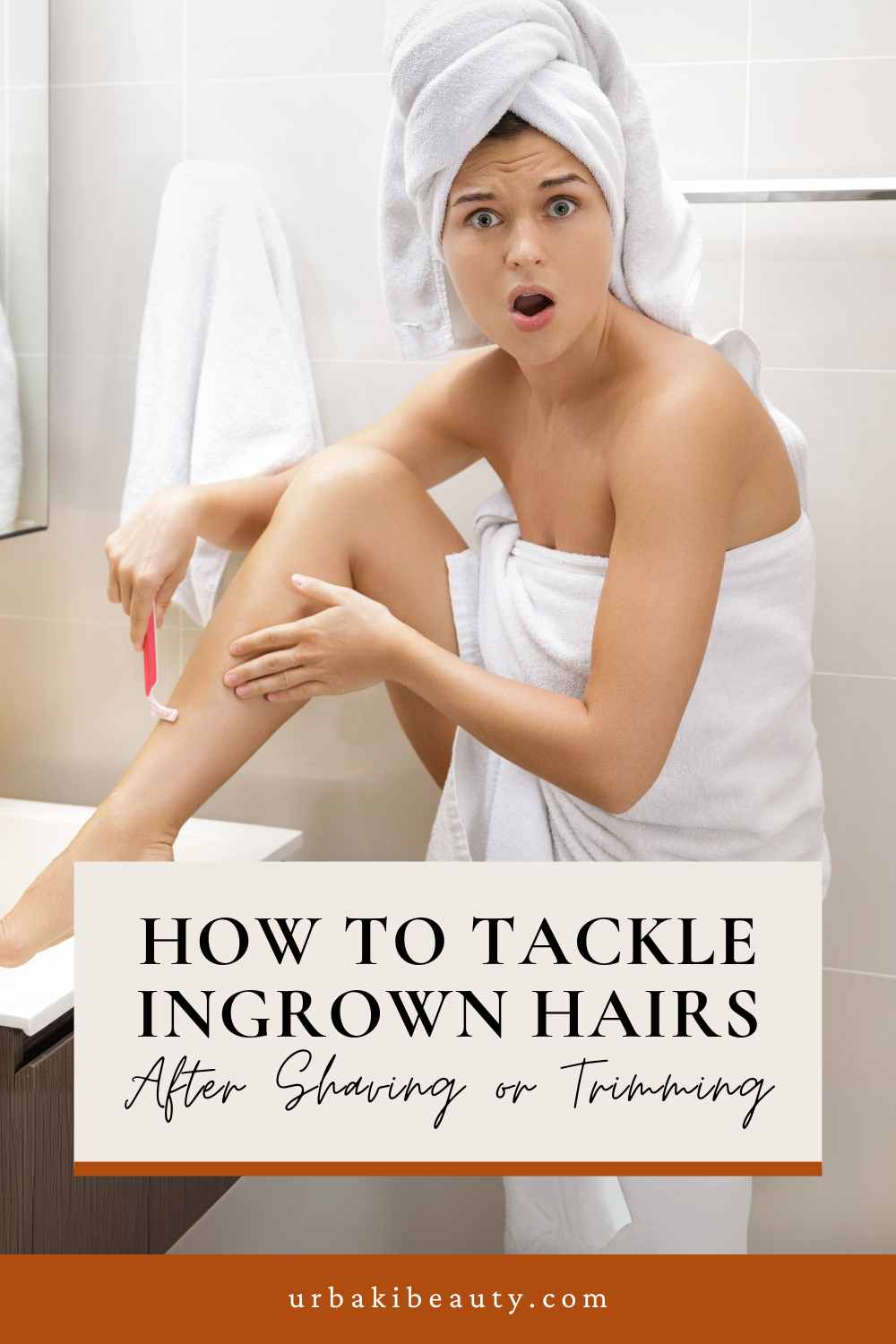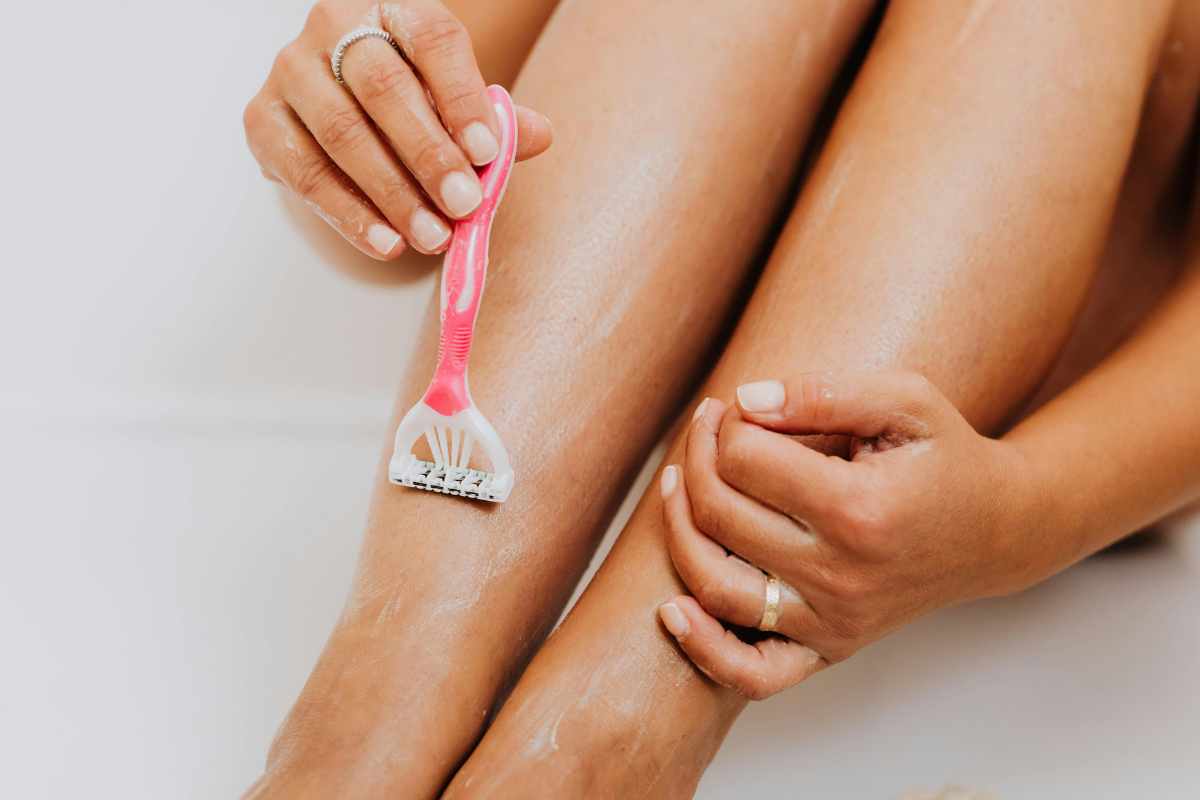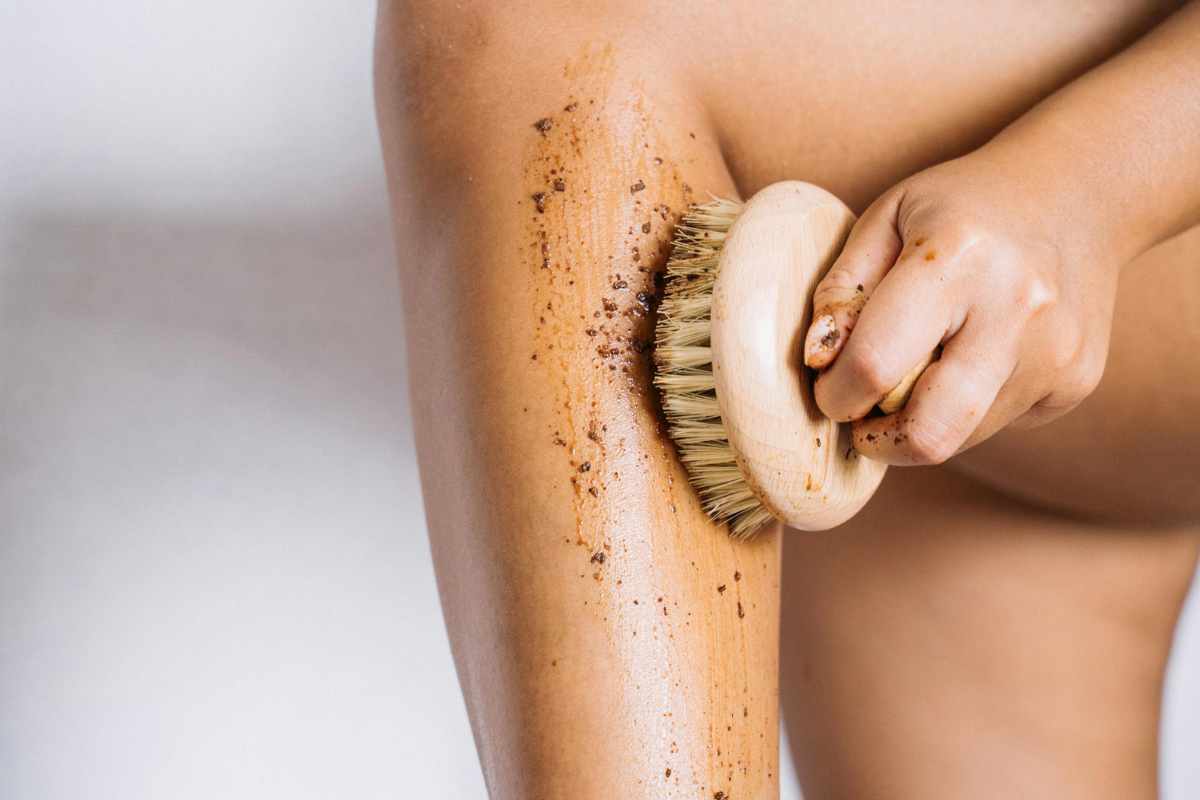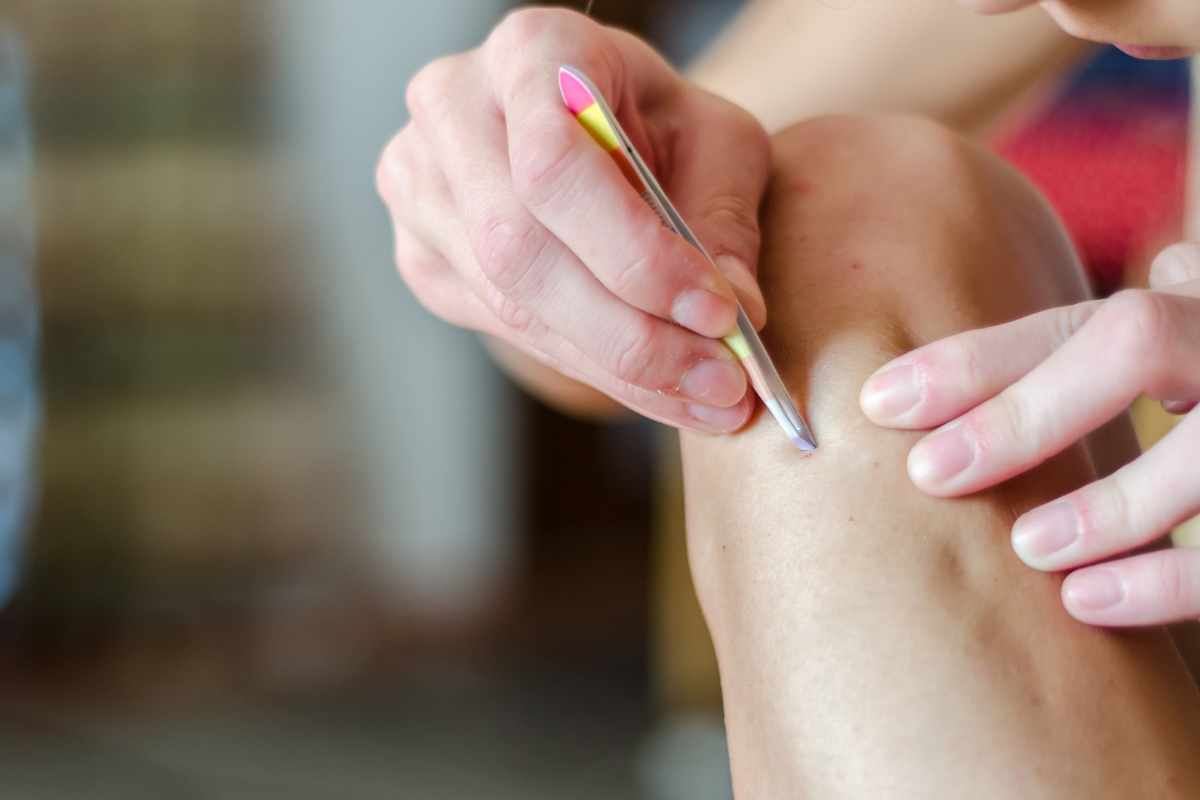How to Tackle Ingrown Hairs After Shaving or Trimming

Ingrown hairs are a common issue after shaving or trimming, and while they are generally harmless, they can be uncomfortable and unsightly.
Whether they appear on your legs, underarms, face, or bikini line, ingrown hairs can cause irritation, redness, and bumps. Fortunately, there are effective ways to prevent and treat them, ensuring smooth and healthy skin.
In this article, we will discuss the causes of ingrown hairs, how to manage them once they’ve appeared, and most importantly, how to prevent them in the future.
Understanding the right techniques, products, and skincare practices will help you achieve smoother, healthier skin without the discomfort of ingrown hairs.
What Causes Ingrown Hairs?
Ingrown hairs occur when a hair that’s been shaved or trimmed grows back into the skin instead of outwards. This happens when the hair follicle is blocked by dead skin cells or when the hair is cut too short, causing it to curl back into the skin.
As the hair grows under the skin, it creates a painful bump and can lead to inflammation or even infection if not properly managed.
While ingrown hairs can happen to anyone, they are more common in areas where the skin is more sensitive or where the hair is coarse, such as the bikini line, underarms, and face.
Additionally, shaving against the grain, using dull razors, or improperly trimming can increase the likelihood of developing ingrown hairs.
Key Factors that Contribute to Ingrown Hairs
Shaving Technique: Shaving too closely or using dull razors can cause hairs to grow back at an angle, which increases the risk of them becoming trapped under the skin.
Trimming or Waxing: Similar to shaving, trimming or waxing hair can cause sharp, broken hairs that may grow inwards.
Tight Clothing: Wearing tight clothing after shaving or trimming can push hair back into the skin, especially in areas like the bikini line or underarms.
Dead Skin Cells: Accumulation of dead skin cells can clog hair follicles and prevent hairs from growing freely, contributing to ingrown hairs.
How to Treat Ingrown Hairs
Once an ingrown hair has developed, it can be frustrating, but with the right approach, you can reduce discomfort and speed up the healing process. Here are a few effective methods for treating ingrown hairs:
Exfoliation to Remove Dead Skin
Exfoliation is one of the most important steps in treating ingrown hairs. By removing dead skin cells, you allow the hair to break free from the follicle and grow outward, rather than being trapped beneath the skin.
Gentle exfoliating scrubs or brushes can help remove buildup from the skin’s surface. Opt for a product with mild exfoliating agents such as salicylic acid or glycolic acid, which can dissolve the layer of dead skin without irritating the area.
Warm Compress for Soothing
A warm compress can help soothe the area and soften the skin, making it easier for the ingrown hair to surface. Apply a warm, damp towel to the affected area for about 10-15 minutes. This can also help open pores and reduce any swelling around the ingrown hair.
Use of Topical Treatments
Topical treatments can help reduce inflammation and prevent infection. Look for creams that contain ingredients such as hydrocortisone, salicylic acid, or benzoyl peroxide to reduce swelling, pain, and bacteria. Applying these treatments can also help the hair break through the skin.
If you notice any signs of infection, such as increased redness, pus, or pain, you may need to use an antibiotic ointment. In cases of severe infection, it is advisable to consult a healthcare professional.
Gently Removing the Hair (If Safe)
If the ingrown hair is visible and easily accessible, you may be able to gently release it using sterilized tweezers or a needle. However, this should be done with caution. Do not attempt to dig into the skin aggressively, as this can lead to scarring or infection.
Always sterilize your tools with rubbing alcohol and avoid squeezing or forcing the hair out. If you’re unsure, it’s better to leave the hair alone and let it come out naturally with proper exfoliation and care.
How to Prevent Ingrown Hairs After Shaving or Trimming
Prevention is key when it comes to ingrown hairs. Here are several practices to help you reduce the likelihood of developing ingrown hairs after shaving or trimming.
1. Shave Properly
When shaving, always use a sharp, high-quality razor to avoid pulling or tugging on the hair. Shave in the direction of hair growth (with the grain), not against it. This reduces the chances of hair being cut too short or in an angle that could lead to it growing back into the skin.
It’s also essential to use shaving cream or gel to provide a smooth surface for the razor, minimizing the risk of nicks or cuts. Always shave after a warm shower, as the steam softens the hair, making it easier to cut.
2. Hydrate and Moisturize the Skin
After shaving or trimming, apply a gentle, hydrating moisturizer to help soothe the skin and keep it moisturized. Dry skin can lead to irritation, which can increase the risk of ingrown hairs.
Look for moisturizers that contain aloe vera, shea butter, or hyaluronic acid, which are known for their soothing and hydrating properties.
Additionally, consider using a post-shave lotion designed to prevent ingrown hairs. These products often contain mild exfoliants and anti-inflammatory ingredients that help keep the skin smooth.
3. Exfoliate Regularly
As mentioned, exfoliating is essential for both treating and preventing ingrown hairs. Use a gentle exfoliator on the areas you shave or trim at least 2-3 times a week. This helps keep pores clear and allows hair to grow freely. Avoid harsh scrubbing, as this can irritate the skin and worsen ingrown hairs.
If you’re prone to ingrown hairs, consider incorporating an exfoliating body wash or a loofah sponge into your routine. These tools help to manually slough off dead skin cells without being too abrasive.
4. Opt for Other Hair Removal Methods
If shaving or trimming consistently causes ingrown hairs, consider alternative hair removal methods such as waxing or laser hair removal. Waxing removes hair from the root, which means it’s less likely to grow back into the skin.
Laser hair removal, though more expensive, provides long-lasting results and significantly reduces the occurrence of ingrown hairs.
5. Wear Loose Clothing
After shaving or trimming, avoid tight clothing that can rub against freshly shaved skin. Tight clothing, especially in areas like the bikini line or underarms, can cause friction and push hair back into the skin.
Opt for loose-fitting clothing to minimize irritation and give your skin time to breathe.
6. Consider Using an Ingrown Hair Prevention Serum
There are several ingrown hair prevention serums available on the market that can help reduce the occurrence of ingrown hairs.
These serums usually contain gentle exfoliants, soothing agents, and sometimes even antibacterial ingredients that help to keep the skin smooth and reduce blockages in the hair follicle.
7. Maintain a Healthy Skin Care Routine
A good skincare routine that includes cleansing, exfoliating, and moisturizing helps maintain skin health and reduce the risk of ingrown hairs. Regularly hydrating your skin and maintaining good hygiene can prevent clogged pores and allow hair to grow naturally.
When to See a Professional
While most ingrown hairs are minor and can be treated at home, there are instances where you should seek professional help:
If the ingrown hair becomes infected or shows signs of pus.
If the ingrown hair doesn’t improve after several weeks.
If you develop scarring or dark spots in the affected area.
If you have a history of cysts or severe ingrown hairs, you might need to see a dermatologist for professional treatment.
In some cases, a dermatologist can provide treatments like laser therapy, steroid injections, or professional extraction of the ingrown hairs.
Conclusion
Ingrown hairs are a common, yet manageable, issue after shaving or trimming. With the right care, gentle exfoliation, and prevention techniques, you can keep your skin smooth and free from ingrown hairs.
By focusing on proper shaving techniques, moisturizing, and exfoliating regularly, you can reduce irritation and prevent future ingrown hairs from occurring.
Taking care of your skin doesn’t have to be complicated—simple, consistent steps can lead to healthier, smoother skin that feels great and looks even better.
Did you find this post useful or inspiring? Save THIS PIN to your Beauty Board on Pinterest! 😊







You may also like